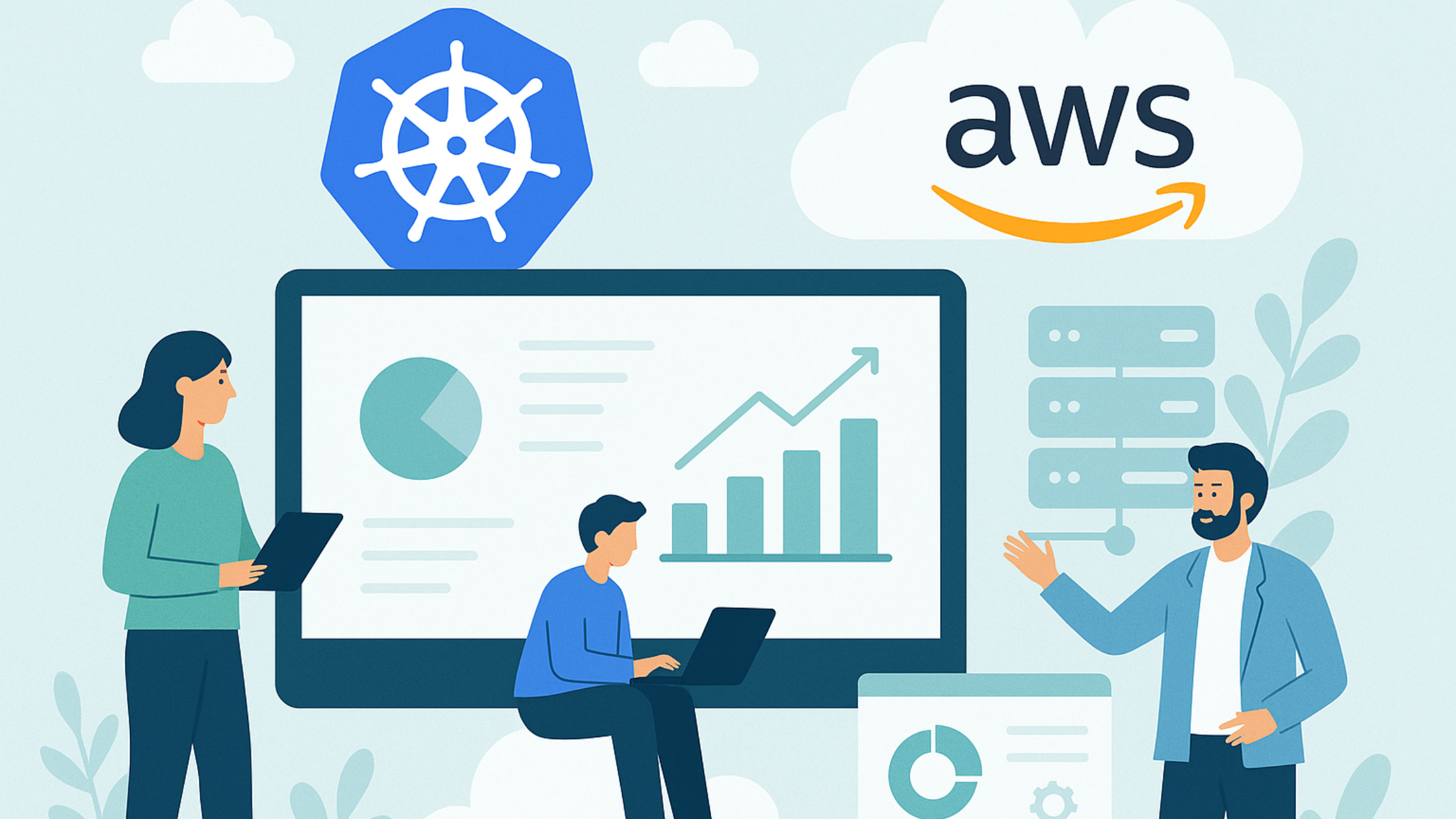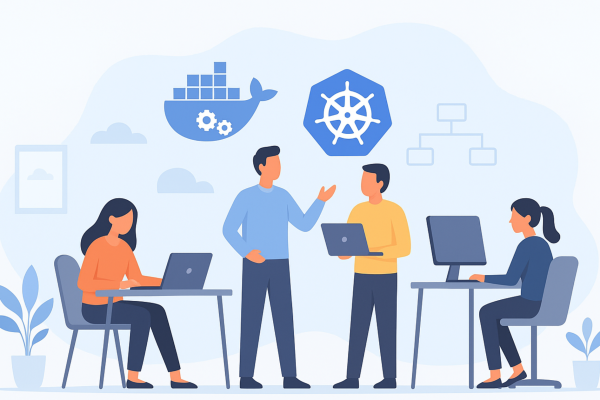EKS Optimization Services for Scalable and Cost-Efficient Kubernetes Workloads in AWS
In today’s fast-paced digital environment, businesses rely heavily on Kubernetes for container orchestration. Among various cloud options, Amazon EKS (Elastic Kubernetes Service) is one of the most popular platforms to deploy and manage Kubernetes workloads in the cloud. However, as usage grows, so do the challenges related to performance, scalability, and cost. This is where EKS Optimization Services play a critical role. These services help businesses fine-tune their EKS environments for better performance, resource utilization, and cost-efficiency while maintaining scalability.
Why Optimization Matters in EKS Environments
EKS provides a managed Kubernetes service, but managing and scaling workloads efficiently is still a shared responsibility. AWS manages the control plane, but you are responsible for configuring nodes, autoscaling, monitoring, and cost control. Without proper optimization, organizations may face challenges such as:
- High operational costs
- Underutilized or overprovisioned resources
- Inconsistent application performance
- Difficulty in scaling efficiently
- Security and compliance gaps
EKS Optimization Services focus on resolving these issues with tailored strategies that enhance resource efficiency, scalability, and budget control.
Key Areas Covered by EKS Optimization Services
1. Cluster Auto Scaling and Node Management
EKS Optimization Services often begin with refining cluster auto scaling configurations. Effective use of node groups and auto scaling policies ensures workloads scale dynamically without over-provisioning.
Use of Managed Node Groups for simplified node management
Setting appropriate Minimum, Maximum, and Desired Capacities
Implementing Cluster Autoscaler and Karpenter for efficient scaling
Utilizing Spot Instances and Reserved Instances for cost savings
Proper node management ensures that you only use the resources needed at any given time, which helps in managing expenses while maintaining performance.
2. Workload Right-Sizing and Resource Requests
A common pitfall in EKS is resource over-provisioning. Applications are often deployed with higher CPU and memory requests than necessary, leading to wasted resources.
EKS Optimization Services include right-sizing analysis to adjust CPU and memory requests/limits.
Monitoring tools like Prometheus and Grafana can help visualize actual usage versus allocated resources.
Automated recommendations through AWS tools or third-party platforms are used to adjust requests and limits over time.
This ensures that your workloads have just enough resources to run efficiently without inflating costs.
3. Efficient Use of Storage and Networking
Storage and network configurations significantly affect both performance and cost. Optimization services assess and improve the following:
Optimized EBS volumes (e.g., using gp3 instead of gp2 for better cost/performance balance)
Efficient use of EFS for shared storage needs
Minimizing data transfer costs by properly configuring load balancers and avoiding unnecessary cross-AZ traffic
Use of Amazon VPC CNI Custom Networking for better control over IP address allocation and network interfaces
Proper tuning of storage and networking reduces hidden costs and improves application responsiveness.
Observability and Monitoring
EKS Optimization Services implement comprehensive observability to detect inefficiencies in real-time.
CloudWatch Container Insights, AWS X-Ray, and OpenTelemetry for tracing and monitoring
Proactive alerting mechanisms for performance anomalies
Continuous monitoring for pod health, resource utilization, and latency
Logging best practices using Fluent Bit or AWS CloudWatch Logs
With observability, optimization becomes a continuous process, enabling you to identify and fix performance bottlenecks as they arise.
5. Cost Management and Budget Controls
EKS costs can spiral if not controlled. Optimization services include detailed cost analysis and budget planning, using:
AWS Cost Explorer and Cost Anomaly Detection tools
Implementing Budgets and Alerts for resource usage
Analyzing EC2 and Fargate cost models to determine the best fit for workloads
Applying Savings Plans or Reserved Instances where appropriate
The result is a predictable and manageable EKS cost structure aligned with your business goals.
Security and Compliance Optimization
EKS Optimization Services also address security as part of efficiency. Secure systems reduce risks and avoid costly breaches or compliance issues.
Pod Security Standards (PSS) enforcement
IAM roles for service accounts (IRSA) for least-privilege access
Regular security scanning of containers and Kubernetes manifests
Audit logs and compliance checks using tools like OPA/Gatekeeper or AWS Security Hub
Security optimization ensures that performance improvements do not come at the expense of protection or compliance.
7. Application Delivery and CI/CD Integration
Optimizing your CI/CD pipeline has a direct impact on how efficiently your Kubernetes workloads run on EKS.
- Use of GitOps tools like ArgoCD or FluxCD for streamlined deployments
- Integration with CodePipeline and CodeBuild for automated delivery
- Canary deployments and blue/green strategies for zero-downtime releases
- Rolling updates to reduce resource spikes during deployments
Efficient application delivery keeps your EKS workloads optimized even during frequent deployments.
Best Practices for EKS Optimization
While optimization services handle the complexity, here are best practices that align with EKS Optimization Services:
- Run periodic resource audits to detect overuse or underuse
- Use Spot Instances strategically for non-critical workloads
- Implement horizontal pod autoscaling (HPA) based on real metrics
- Regularly update and patch EKS versions and AMI images
- Adopt Infrastructure as Code (IaC) tools like Terraform for consistent and reproducible optimization
By following these best practices, businesses can ensure long-term scalability and cost efficiency in their EKS environments.
Benefits of Using Professional EKS Optimization Services
Choosing professional EKS Optimization Services brings several benefits:
- Expert Analysis: Deep insights into usage patterns and resource management.
- Cost Reduction: Tailored cost optimization strategies that deliver measurable savings.
- Improved Performance: Faster, more reliable applications with less resource waste.
- Scalability: Systems that grow seamlessly with business needs.
- Security Compliance: Hardened systems aligned with industry standards and regulations.
- Focus on Business Goals: Teams can focus on innovation while experts handle optimization.
These services are especially valuable for companies managing large or complex Kubernetes workloads in AWS.
Conclusion
AWS EKS provides a powerful foundation for running Kubernetes workloads, but without optimization, it can become expensive and inefficient. EKS Optimization Services offer a structured approach to enhance performance, reduce costs, and support scalable applications. From right-sizing workloads and efficient node management to observability, cost control, and security, these services ensure your Kubernetes environment in AWS runs at peak efficiency.
Partnering with experienced EKS optimization professionals can give you the edge in cloud-native performance while ensuring your infrastructure remains cost-effective and future-ready.
Author







